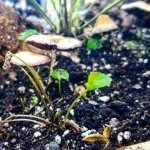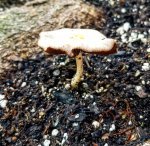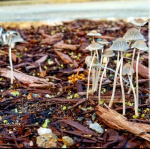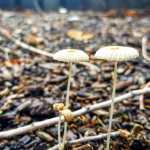Christa Avampato's Blog, page 41
July 15, 2020
Write every day: The wonder of flatworms
The flatworm is my spirit animal. These badass animals won’t be stopped. Cut them in 1/2, they become 2 worms. Split their head, they grow 2 heads. Lose an eye, they grow a new one. Stick an eye on a flatworm that lacks eyes, the eye becomes fully functional.
Pieces of flatworms that are one-279th become whole flatworms again. They overcome every obstacle put in their way and become even better for it, again and again and again. You can’t beat ’em. They clap back. That level of resilience is my goal.
Read more about these wondrous animals at https://www.nytimes.com/2020/06/29/science/flatworms-eyes-regeneration.html
July 14, 2020
Write every day: Why I’m grateful for Tax Day today
Today’s Tax Day. Because I work for myself, today I had to pay my Q1 & Q2 2020 estimated taxes. And I’m grateful for it. It may sound strange to think of paying taxes as something to be grateful for. But I am. Grateful that I do the work I do, especially now, and because that money funds so many programs that help others. I used to be one of the people it helps. Now, I’m able to give back. And that is no small accomplishment.
July 13, 2020
Write every day: After the rains came the fungi




After heavy rains, I’m reminded of the life that thrives below ground, teeming, waiting for its time to rise into our view. I snapped photos of these fantastic fungi this morning while walking my dog, Phineas.
Fungi are the OG internet, a.k,a. the Mycelial Network and Wood Wide Web. Mycelium have millions of tiny threads below ground that connect all the trees and plants in an area to one another. This network transports water and nutrients such as nitrogen, carbon, potassium, and phosphorus for the fungi, trees, and plants.
The Mycelial Network also builds the immunity of plants and trees, and serves as a communication network to allow plants and trees to “talk” to one another. It’s one of the most incredible parts of our natural world.
July 12, 2020
Write every day: Rebuilding Paradise documentary film
[image error]Fire as a chemical process permanently transforms everything it touches—people, wildlife of every kind, land, water, and spirit. Bravo to the people of Paradise, California, Ron Howard, Sara Bernstein, and National Geographic Docs on the premiere of the stunning documentary, Rebuilding Paradise about the wildfire that ravaged the town last year.
I feel so fortunate that I was able to attend the online event. The film makes a powerful case for sustainable resilient development and climate change mitigation while telling a very human story. For more information, please visit the film’s website RebuildingParadise.Film.
Write every day: New York City’s good news
If you need some good news about COVID in your timeline, here it is: for the first time since the pandemic began, NYC has had no deaths from COVID in the past 24 hours. The turnaround in New York City’s numbers has been a massive community effort and I’m so proud of how we pulled together to take care of each other. I love you, New Yorkers! Please keep wearing your masks.
Here’s a news story about New York City’s numbers and our recovery: https://www.nbcnewyork.com/news/local/new-york-city-without-coronavirus-deaths-for-first-time-since-start-of-pandemic/2511864/
July 3, 2020
Write every day: Braiding Sweetgrass by Robin Wall Kimmerer
Have you ever loved a book so much you hug it and you’re sad that it’s over? That’s how I feel about Braiding Sweetgrass by Dr. Robin Wall Kimmerer. Luckily, I got to hear Dr. Kimmerer talk to Alie Ward today on the Ologies podcast. So many smiles. https://www.alieward.com/ologies/bryology
I started reading this book during the darkest days of COVID here in NYC. The book became a friend. I would read a few pages in the morning and a few at night to find hope, courage, and wonder in the natural world.
Thank you, Dr. Kimmerer and Alie for this beautiful episode! Now I’m taking my loupe out for a walk to look at the micro-forest in moss.
July 1, 2020
Write every day: Bringing NYC back to life
NYC Fiscal 2021 budget changes
How do we regenerate NYC as a healthy, clean, joyful, equitable, beautiful, loving city for ALL with the best education, healthcare, & opportunity? What if that’s not a pipe dream but the goal? How would the NYC budget need to change to support that? I’m dedicated to answering these questions as I write the research proposal for my PhD application in Sustainable Urban Development.
June 29, 2020
Write every day: My feature on biomimicry is in The Henry Ford Magazine
[image error]I’m so excited to share that the feature I wrote about biomimicry, Making Mother Nature Our Muse, has been published in The Henry Ford Magazine‘s latest issue which is all about sustainable design.
The Henry Ford is an innovation museum in Detroit, Michigan, that I’ve admired for years. I’m so pleased to be able to speak to their members through this piece.
Big hat tip to Lex Amore at the Biomimicry Institute, Jennifer LaForce, the wonderful editor of the magazine, and James Round for his beautiful illustrations.
You can find my stand alone feature here: Making Mother Nature Our Muse by Christa Avampato
The whole issue is fantastic and is available for free online here: The Henry Ford Magazine—June-Dec 2020
June 25, 2020
Write every day: Thoughts about an empty Times Square
Phin and I took our second subway ride to see what Times Square looks like now. Known as one of the most hectic areas of the city that many locals avoid, it’s gone silent. The show, for now, doesn’t go on. But this is not the first time in its history Times Square has been silent. 400 years ago before New York was New York, the center of Times Square was a beaver pond that served as the heartbeat of what was Mannahatta, the island of the Lenape tribe. We’ve forgotten that pond because now it’s a Walgreens.
The only visible remnant of the time of the Lenape is Broadway’s crooked line that traverses the island from north to south. That crooked line follows the Indian Wickquasgeck Trail that guided the Lenape through the thick forests dense with pin oak, chestnut, poplar, and pine that often opened into expansive fields dotted with wild strawberries.
In Times Square on the summer solstice
I thought about those forests as Phin and I stood outside of the Times Square subway station on Saturday night, the summer solstice, behind a police barrier with hundreds of unmasked NYPD officers standing around guarding empty storefronts from protesters who would never arrive. Times Square now has only a dull, barely-there hum, just a shell of its former self. It’s on an extended intermission, for now.
I came of age in Times Square, working in Broadway theaters and living in Hell’s Kitchen, completely unaware of its ancient forest past. Broadway shows are collectively NYC’s largest tourist attraction, and I’m sad that it will be a long time before we see it return the way that it existed prior to March. Without tourists, this industry and all the businesses that have grown up around it can’t survive. With the constant threat of COVID-19, it’s hard to imagine how these theaters will reopen. I worked backstage in them for years. In one of them we could barely keep the rats under control (that’s not an exaggeration) much less sanitize them against a deadly virus. They were never built to be sanitized.
Columbus Circle
Phin and I walked along 42 Street, up 6th Avenue, and then crossed back west on 47th Street. 42nd to 47th, from 6th to 8th Avenues, is totally blocked off and guarded by police around the clock. They say it’s necessary. I think it’s a colossal waste of resources we don’t have.
We kept walking along 47th, over to 8th Avenue, and up to Columbus Circle. This area used to be a collection of streams that flowed south and then collectively roared east before finding their way to the East River. Now its center is a statue that commemorates the destruction of this land and the people who lived here. If protestors try to take down Columbus’s statue, an army of police officers who are ready to protect stone over human life will stop them. On our long walk Phin and I saw less than 10 other people aside from police officer, who numbered into the hundreds.
The gift of resilience
Since I spent so much of my early career in Times Square and working in theater, seeing all the lights dimmed, the stages empty, and the music replaced by silence made me tear up. Whenever we lose something familiar, something we assumed would just go on forever, there is a mourning. How could there not be?
As someone who’s lived through traumas before, who’s lost nearly all of my material belongings to a fire over a decade ago just north of Times Square, who feels lucky every day to have another day at all because I’ve had several near-death experiences, I’ve grown used to constant, shocking, transformative change. Building resilience is painful and frightening because you have to survive tragedy after tragedy to create that emotional muscle. But once you have it, nothing can break you. Resilience is a superpower.
Sure, I still get angry, sad, disappointed, and hurt. I may be resilient but I’m still a hopeful human being. I just never expect the happy path. I expect difficulty and rejection, which is lucky because that’s usually what I find. And that’s not anything particular to me; that’s just life.
My resilience helps me to dream and work for very big goals. I never stop climbing because I know how great the view is up there, and I know how good it feels to go down the other side of the mountain. I have many mountains ahead of me and that doesn’t scare me at all—it’s actually what motivates me to keep going.
The future of New York
And this brings me back to my city. I know in my mind and heart that New York will never be the same again. The transformation we are just beginning is massive and unrelenting. Many businesses, whole industries, and ways of life will be relegated to the history books, just like the long-gone beaver pond. Already many people are leaving the city. Many more will leave in the months ahead either by choice or because there is no way for them to stay. I’ve been in both of those situations before, and my heart breaks for people who leave because leaving a place you once loved always hurts to some degree no matter if it’s by choice or necessity.
City agencies will also be forced into unprecedented change. New York has a $10 billion budget deficit now. People and businesses leaving the city will reduce the amount of collected taxes even further, and that will require a total government rethinking. This pandemic and the demands for social justice have exposed massive holes, inadequacies, and inequities in our education, police, and healthcare systems to name just a few.
But in all this pain, there will also be new possibilities. The seeds are there. They’ve always been there. Now they get their chance to shine, or at the very least their chance to try. They’ll send out shoots and try to create roots in what’s left of the proverbial soil of New York. Only time will tell us if they can survive and thrive in what remains.
Phase 2
This week New York City began Phase 2 of reopening. We’ve reopened more parts of our city, and now we wait and watch the numbers, and see what happens. Whatever lies ahead, I’ll be here, doing my best to usher in the city’s next chapter whatever that chapter may be. We are living through one of the most drastic and monumental changes in our history, an inflection point that will forever define a before and after. I don’t know what the future holds but I’m committed to showing up and doing my best.
June 16, 2020
Write every day: 9/11 art grows hope from tragedy
Around the 9/11 Memorial in the Financial District of NYC, brightly-colored street art in the pop art style is surprising and joyful. I went there this weekend during my first trip out of my uptown neighborhood in 3 months. The colors are so electric and unexpected on a sunny day that the whole scene looks like an Edward Hopper painting.
It’s usually a very busy area of the city. On Sunday, I saw less than 10 people in these few blocks.
I worked in a building next to the 9/11 site for 4 years while it was under construction. To see it now, so different and vibrant, fills me with hope.
We can rebuild from tragedy. There are seeds in the wreckage. It takes a lot of work over a very long period of time, and it can be done. We’ve seen it. We’ve done it before and we’ll do it again.
[image error]
[image error]
[image error]
[image error]
[image error]
[image error]
[image error]
[image error]



